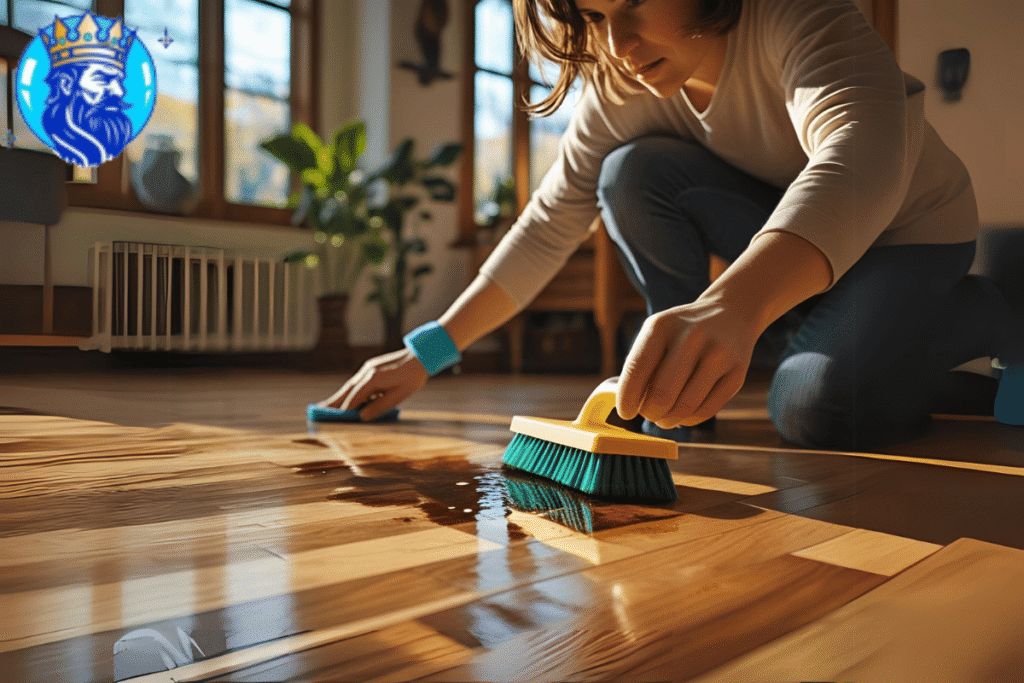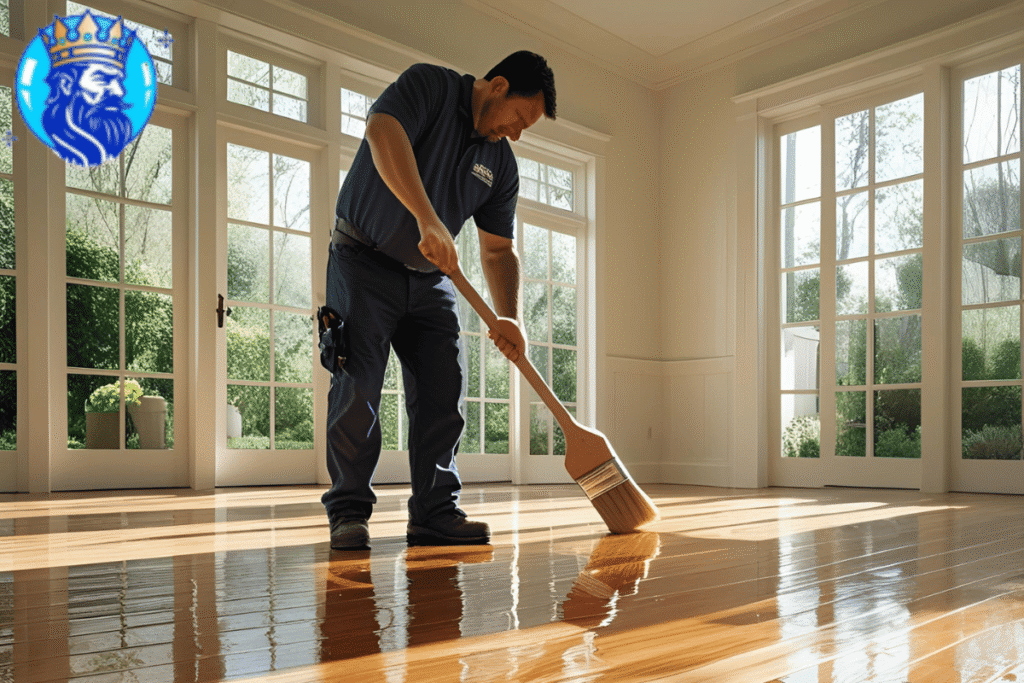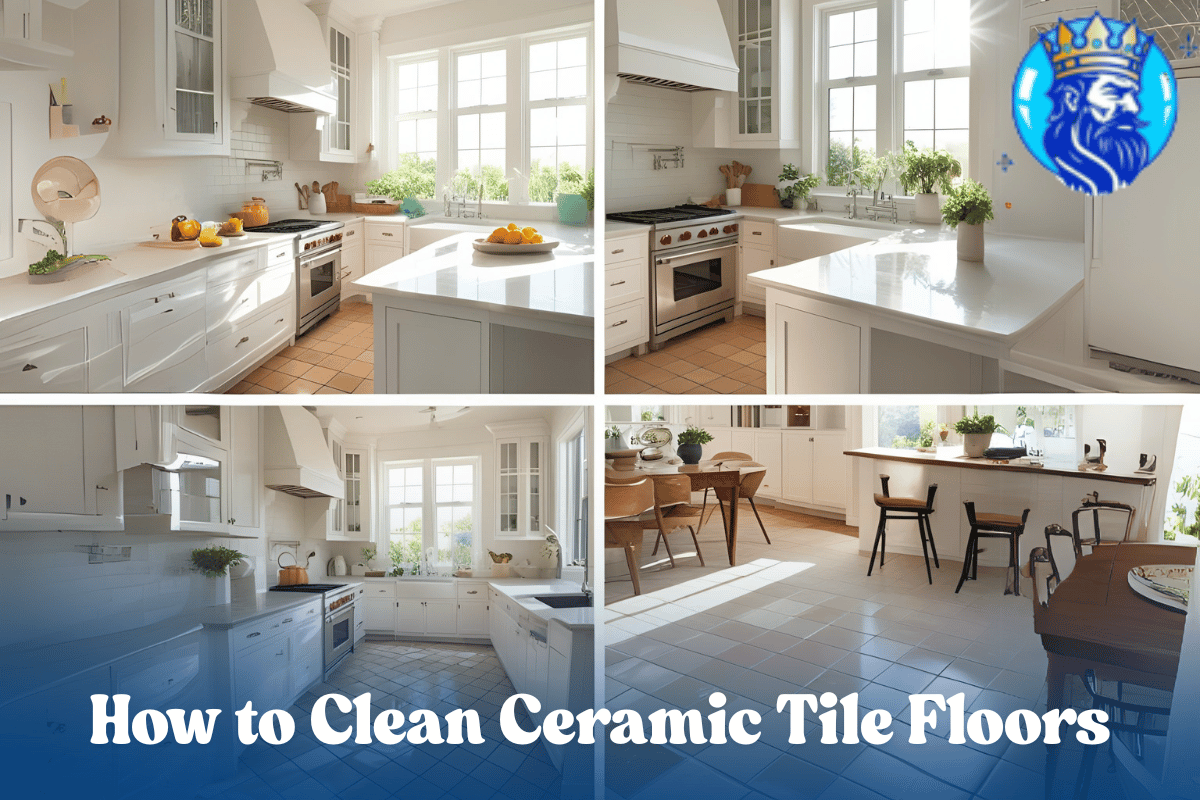Ceramic tile flooring is a common choice in commercial settings due to its exceptional durability, aesthetic versatility, and resistance to moisture. From corporate offices and retail centres to health clinics and educational buildings, these surfaces provide long-term functionality with minimal upkeep when properly maintained.
However, regular foot traffic, Canadian weather conditions, and hard water exposure can quickly dull the tiles’ appearance and cause wear if not addressed systematically. Maintaining ceramic tile floors requires more than just a mop and bucket; it demands a structured approach rooted in effective techniques, professional equipment, and environmentally responsible practices.
This article provides a practical, research-based cleaning plan specifically designed for facility managers, custodial supervisors, and business owners who want long-term performance and hygiene for their tile floors.
1. Start With Dry Soil Removal
Begin with a complete dry sweep or vacuum using a high-efficiency particulate air (HEPA) vacuum or soft-bristle commercial broom. This step removes sand, dirt, and salt tracked in from outside particularly critical in winter. If not removed early, these particles can act like sandpaper underfoot, leading to micro-abrasions that dull the tile’s finish over time.
2. Mop With a Neutral pH Cleaner
For routine cleaning, use warm water and a neutral pH tile cleaner. This helps break down dirt and residues without etching or degrading the glazed finish of ceramic tiles. Avoid highly alkaline or acidic products such as bleach or ammonia, which can cause long-term surface damage and leave behind slippery residues.
For businesses prioritising indoor air quality, select plant-based, biodegradable detergents. These non-toxic solutions are ideal for commercial environments where people, pets, or food may be present.
3. Targeted Spot Cleaning for Stains

Promptly address spills or stains with a damp microfiber cloth and a small amount of mild cleaning solution. For grease or oil-based stains often found in kitchen or industrial environments use citrus-based degreasers with eco-certification. These provide effective cleaning while avoiding the harsh fumes and environmental concerns associated with solvent-based products.
4. Use Commercial-Grade Steam Cleaning
Steam cleaning is a powerful, chemical-free method for deeper tile restoration. By applying high-temperature steam, it can loosen embedded dirt and sanitise surfaces without the need for harsh detergents. This is particularly valuable in environments with high hygiene demands such as dental offices, gyms, or healthcare clinics. Ensure grout is sealed before applying steam to prevent moisture absorption.
5. Pay Attention to Grout Lines
The cleanliness of ceramic tile grout often determines the overall appearance of the floor. Even if tiles are spotless, stained or darkened grout can make the surface appear unkempt. Start by brushing grout lines with a soft-bristle brush and a baking soda paste, or use an enzyme-based commercial grout cleaner for more intensive results.
For a more detailed approach, refer to this step-by-step grout cleaning guide for home and commercial spaces. Sealing grout every 6 to 12 months can also reduce the risk of staining and simplify ongoing maintenance.
6. Adopt Auto-Scrubbing for Large Areas
If you’re managing larger square footage such as hotel lobbies, malls, or educational institutions, auto-scrubbers can greatly improve cleaning efficiency. These machines dispense cleaning solution, scrub, and vacuum in a single pass. Use a soft pad specifically designed for ceramic tile to avoid surface abrasion.
To minimise environmental impact, opt for auto-scrubbers that support low-water or greywater recycling modes and use green-certified detergents.
7. Winter Maintenance Considerations
Canadian winters introduce slush, de-icing salts, and excess moisture all of which can degrade tile surfaces and cause discolouration in grout. Place heavy-duty floor mats at entrances, and implement a frequent mopping schedule with warm water during peak snow periods. Use a diluted vinegar solution occasionally to dissolve salt deposits, followed by a pH-neutral rinse to restore balance.
For facility owners dealing with moisture-prone surfaces in lower levels, this guide on how to clean concrete basement floors may offer additional value.
8. Finish With a Protective Sealer

Once tiles and grout are thoroughly cleaned, apply a water-based ceramic tile sealer. This adds a protective layer that repels future spills and helps maintain a clean appearance over time. Ensure the product is free of volatile organic compounds (VOCs) and safe for use in enclosed commercial environments.
If your space includes a variety of flooring materials such as linoleum or marble make sure to select sealants specific to each surface type. You can explore more tailored care approaches through these articles on how to clean linoleum floors and how to clean marble floors.
9. Routine Scheduling and Inspections
Establish a routine schedule for cleaning tasks based on traffic levels. In general:
- Daily: Sweep and damp mop
- Weekly: Deep mop with neutral pH solution
- Monthly: Spot test for sealer wear, reapply if necessary
- Quarterly: Professional deep clean and re-evaluation
Document each session to monitor trends in soil levels or early signs of grout damage. Consistent records support proactive maintenance and budgeting.
10. Hire a Professional Commercial Cleaning Service
When in-house staff are unavailable or lack the proper training, outsourcing to a Commercial Cleaning Service can ensure optimal floor care. A provider experienced with ceramic tile cleaning brings the right tools, products, and knowledge to preserve both cleanliness and compliance.
By hiring a cleaner who knows this method of cleaning, businesses avoid common mistakes such as using incorrect chemicals, oversaturating tiles, or damaging grout all of which can be costly to repair and harmful to indoor environments.
Final Notes
Ceramic tile flooring remains one of the most resilient and visually appealing options for commercial spaces but only when maintained with intention. Factors such as Canadian climate, water hardness, and heavy usage require a structured, well-researched approach to cleaning.
From using pH-balanced products and sealing grout to scheduling deep cleans and embracing green methods, every step contributes to long-term performance and workplace wellness. If your facility includes other flooring types like vinyl, take a moment to review this guide on how to clean vinyl plank flooring to keep your entire premises consistently clean and presentable.
Professional support is often the most effective route to ensuring your floors reflect the quality and standards your business upholds.



